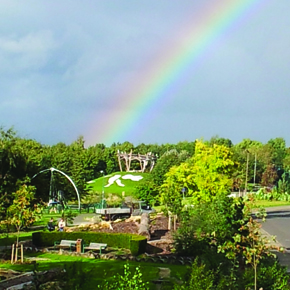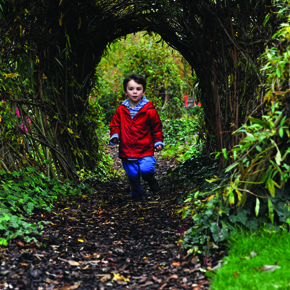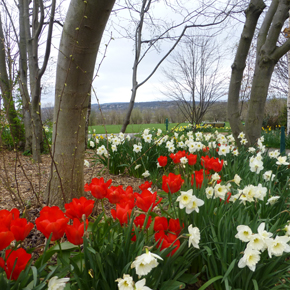
Is the future bright for Britain’s green spaces?
Paul Collings, managing director at Timberplay, takes a look at the huge challenges facing Britain’s parks, with a spotlight on Sheffield and how they are approaching the impending crisis…
 Britain’s parks are in peril. As Government cuts continue, parks are set to be one of the biggest losers, and it is easy to see why. While councils scramble for the pennies to keep essential services like social care and refuge collection operational, as a non-statuary service, parks are an easy target.
Britain’s parks are in peril. As Government cuts continue, parks are set to be one of the biggest losers, and it is easy to see why. While councils scramble for the pennies to keep essential services like social care and refuge collection operational, as a non-statuary service, parks are an easy target.
The value of our green spaces is very difficult to quantify; we do not measure use and, as they are free at point of entry, it is problematic to get a true indication of the groups that regularly use and benefit from parks. However, anecdotally, we know that they are an essential resource for groups across all society – families, the elderly, students, those with limited mobility, fitness fans, dog walkers and ramblers amongst others.
As the nation sets its sites on targeting obesity, the role of parks in fighting that inactivity needs to be better communicated, valued and understood. Moreover, there is also a growing body of evidence that highlights the value of parks and green spaces in reducing anxiety and preventing mental health problems.
HLF has been aware of the impending crisis and worked with NESTA to develop the Rethinking Parks programme in 2014.
Working with various councils and organisations, this programme seeks to better understand the options for generating income for parks. Projects all around the UK have looked at different ways of achieving this, and two are well underway in Sheffield –currently the Greenest City in Europe – one from the National Trust and the second from the People’s Park, a community park comprising a collection of small pocket parks within the Heeley suburb of Sheffield.
The National Trust has received £100,000 funding to work on an 18-month project which seeks to explore an endowment model.
The figure required in order to operate a successful endowment is £100m, and the research seeks to explore how realistic this is.
Harry Bowell, regional director at the National Trust is heading up the programme: “One of the National Trust’s priorities has always been to protect the nation’s green spaces for future generations and, as such, public parks are of immense value to the population. It is now clear that central Government won’t underwrite the nation’s parks and recreational open spaces – so what is the alternative?
“The solution can’t be for national charities to ride to the rescue with a wholesale takeover of the council’s parks. Nor can local communities be expected to take on this huge responsibly alone. With the traditional models for funding parks breaking down, we need bold new ideas, new solutions that, while locally specific, can work in every city and town.
“Although this project is only half way through, various routes are being explored. One of the potential income streams identified is to make the link between health outcomes and the use of green space in the city. The trust has also identified more effective use of park facilities, café’s, car parking, and hire revenue for use of public spaces for events.
 “These elements have been a very effective part of the National Trust’s model, making up a large part of its income. The extent of the problem is not being effectively communicated, there is no funding, we need creative solutions to safeguard the future of our green spaces, so we need open dialogue in order for residents to appreciate just how critical this situation is.”
“These elements have been a very effective part of the National Trust’s model, making up a large part of its income. The extent of the problem is not being effectively communicated, there is no funding, we need creative solutions to safeguard the future of our green spaces, so we need open dialogue in order for residents to appreciate just how critical this situation is.”
The other Sheffield scheme underway approaches the problem from a different standpoint. Rather than the nationwide, big brand charity status that the National Trust has, The People’s Park is an initiative grown from a community social enterprise – Heeley Development Trust.
Andy Jackson has been at the helm of this organisation for the last 15 years, taking on the management of small green spaces and linking them together to create a variety of experiences, including a play area, BMX pump track, landscape-led play features, a large event field and a natural amphitheatre.
Trust manager, Andy Jackson, commented: “Our parks and many of our important heritage buildings are public assets – they define the places we live in and they are ours. They should not be sold – they should be cherished and we think public retention and community stewardship offers a new model.
“With budgets as they are, it is increasingly difficult for the local authority to take care of Sheffield’s green spaces in the way they have. We have shown in Heeley how it is possible for local stakeholders to take on the care and management of our own green spaces, creating spaces to suit the local community.
The People’s Park idea builds on this philosophy of civic responsibility and community stewardship.”
The People’s Park model harks back to the Victorian concept of a subscription society – with local residents supporting their green spaces with a regular payment. Andy explains the initiative:
“People think parks are paid for by Council Taxes – they aren’t. Our park receives no council funding at all so, year-on-year we are fighting to secure funding for the upkeep of the park. To deliver the ongoing maintenance, community involvement, festivals and events programme, we need to find £45,000 annually; the more we raise, the more we can do.
There are currently 4,500 households in our community – by inviting each household to contribute £10 per year, our income would, potentially, be secure. This would mean that the foundation for the maintenance was safe and our time and manpower resources could be freed up to access further funding or run events to enhance the space further for the benefit of the local community.”
Heeley is by no means an affluent area, and not all households will be willing or able to contribute to the scheme. However, Andy believes that green spaces also benefit the businesses that operate with, in and around that space, so sees their financial contribution as a key element.
This model however relies on the presence of a passionate and enthusiastic team working on each park project. Andy continues: “Looking at Sheffield, we have enough project managers, green estate managers, creatives, academics, event organisers and musicians to pull together an enviable team of experts who can work with local groups and organisations to support them in managing their own green spaces.
“By operating in this way, we will succeed in having the management and expertise necessary to professionally manage the projects, and the local passion and enthusiasm to create spaces that truly reflect the needs, wants and personality of the local community.”
These two projects both represent different approaches to plugging the funding gap – it remains to be seen which one will be most workable. In order to gather support for this scheme, the initial battle is in getting the population to understand the position we are now in – local authorities are no longer able to pay for our beloved green spaces and, rather than lamenting over this fact, we need to embrace the problem and actively seek positive solutions.
Find out more in the April 2016 issue of PSB Magazine
Latest news

21st February 2025
ASSA ABLOY EMEIA: Save valuable time and money with a seamless switch to programmable digital keys
In 2025, access management can be a whole lot easier. By making access part of their digital processes, businesses can put time-consuming key management and the cost of changing the locks firmly behind them. Making this switch is a lot easier than many people think, as ASSA ABLOY explains here…
Posted in Access Control & Door Entry Systems, Architectural Ironmongery, Articles, Building Industry News, Building Products & Structures, Building Services, Doors, Facility Management & Building Services, Health & Safety, Information Technology, Innovations & New Products, Retrofit & Renovation, Security and Fire Protection
21st February 2025
Showersave supports industry leaders in addressing Part L and Part G regulations
Showersave has sponsored and participated in a recent Building Insights LIVE roundtable on ‘Water & Energy Saving Innovations in New Build Housing’.
Posted in Articles, Bathrooms & Toilets, Bathrooms, Bedrooms & Washrooms, Building Associations & Institutes, Building Industry Events, Building Industry News, Building Products & Structures, Building Regulations & Accreditations, Building Services, Exhibitions and Conferences, Interiors, Pipes & Fittings, Plumbing, Retrofit & Renovation, Sustainability & Energy Efficiency
21st February 2025
GEZE: The importance of Specifying High Quality Door Closers on Fire Doors
Andy Howland, Sales & Marketing Director at GEZE UK, discusses why specifying high quality door closers on fire doors is important…
Posted in Access Control & Door Entry Systems, Accessibility, Architectural Ironmongery, Articles, Building Industry News, Building Products & Structures, Building Regulations & Accreditations, Building Services, Doors, Facility Management & Building Services, Health & Safety, Posts, Restoration & Refurbishment, Retrofit & Renovation, Security and Fire Protection
21st February 2025
Insight Data achieves ISO9001 recertification with zero non-conformities
Leading industry data specialist, Insight Data, has successfully achieved the prestigious recertification for ISO9001 with zero non-conformities for the fourth consecutive year.
Posted in Articles, Building Industry News, Building Regulations & Accreditations, Building Services, Information Technology, Research & Materials Testing
 Sign up:
Sign up: